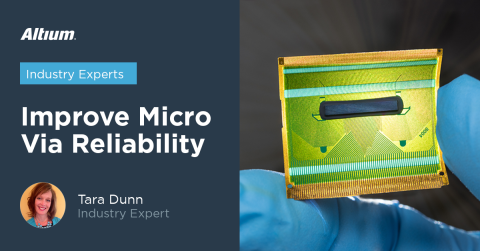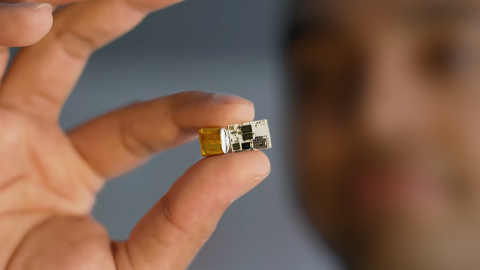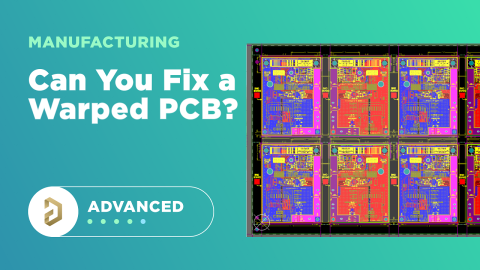How to Choose the Best Desktop Reflow Oven for PCB Assembly

When you take a board into a PCB factory, SMD parts are going to be assembled onto the board using reflow soldering. This highly efficient process is standard in electronics manufacturing, but some companies have built soldering products that scale down reflow soldering to small desk-sized oven units.
Why consider buying a desktop reflow oven? Sometimes, if you opt for prototyping in-house, it makes sense to run a basic reflow process on a group of boards rather than send out for assembly with a vendor. This will be much better than having a technician hand solder or air solder everything onto your prototypes, and ideally you can get a small batch of ready-to-use PCBs after only a day’s work.
Before you go shopping for a desktop reflow oven, pay attention to these tips. And just remember, like most electronic equipment, you get what you pay for.
What to Expect in Desktop Reflow Ovens
All desktop reflow ovens operate with the same goal: run a reflow temperature profile for a small batch of boards. When using these oven units, you will normally put the PCBs with placed parts and solder paste in a drawer, and you'll run the reflow temperature profile with the controls on the front of the unit. Once the reflow profile completes, you'll have a batch of finished boards that are ready for testing. Note that the completed boards may require cleaning before use.
Example reflow temperature profile. (Source)
The features and capabilities of these systems can vary greatly, and of course this determines the cost. For instance, consider the following features:
- Ability to save multiple reflow profiles in memory
- Pb-free solder compatibility
- Ability to customize the number in size of steps in the reflow profile
- Forced air convection versus static heating element
- Access to a software application for configuration
- Integration of the device into a custom application
- Service or warranties from the manufacturer
The quality of these systems also varies greatly. Of course, quality refers to the construction quality of the oven itself, but it also refers to the accuracy of the temperature profile and the consistency of temperature inside the oven. The temperature everywhere in the chamber should have minimal variation and should follow the reflow profile to the greatest extent possible. This is something you can check for yourself with some simple thermocouple probe measurements.
Regarding outlets to purchase these units, there are some inexpensive systems you can buy on Amazon, and I think the quality of these is questionable. You'll see this yourself if you read some of the product reviews for inexpensive desktop reflow ovens. You might also consider buying from eBay, in which case be prepared to do a bit of maintenance on the unit as needed.
With all this in mind, let's look at some examples of desktop reflow oven units you can purchase for yourself. The products shown below are just examples, there is no official endorsement by myself or Altium.
Lowest Priced Option: Puhui T-962
This Chinese unit is at the lower end of the price spectrum; as of the time of writing this updated article on this page, Amazon lists the unit for sale at $289. Other units are available at similar prices. This smaller desktop unit uses quartz heating tubes to bring the chamber up to temperature and is suitable for double-sided reflow soldering.
One of the drawbacks of Chinese equipment is (sometimes) the language used in the menu. Sometimes, menu options are written in Chinese characters, even if the menu settings are in English. Sometimes, there are only two menu options: Chinese and English; you won’t have an option in your native language. When you get to higher end equipment, you will start to see more options and greater capabilities available for desktop reflow soldering.
Professional Option: DDM Novastar GF-12HT
This reflow oven uses a horizontal convection heating method to ensure better uniformity of temperature over a simple quartz tube heating element. The temperature monitoring and control interface is compatible with standard K-type thermocouples, and there is an option for a nitrogen gas flow inlet. This is a very useful feature for ensuring quality and reliability as nitrogen gas flow slows oxidation and improves solder paste wettability.
Instead of using a drawer to hold your PCBs, this desktop reflow system uses a conveyor to move boards through the reflow profile, so it more closely resembles the reflow system you would see on the factory floor.
DDM Novastar does not publish the price of this unit on their product page, so you will have to request a quote. This usually means the price is relatively high, and other desktop reflow ovens with comparable features can cost thousands of dollars.
Additional Equipment: Exhaust
Remember that you are running solder paste through an oven, and the paste contains a flux formulation that will release fumes as soldering progresses. You should exhaust these fumes away from your work area, which might require some fans and tubing. If you take a look at the least expensive option shown above, there is an outlet with a fan that will push flux fumes out of the oven; it’s a good idea to use some tubing to flow these away from the work area.
Whether you need to build reliable power electronics or advanced digital systems, use the complete set of PCB design features and world-class CAD tools in Altium Designer®. To implement collaboration in today’s cross-disciplinary environment, innovative companies are using the Altium 365™ platform to easily share design data and put projects into manufacturing.
We have only scratched the surface of what’s possible with Altium Designer on Altium 365. Start your free trial of Altium Designer + Altium 365 today.











